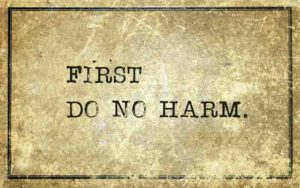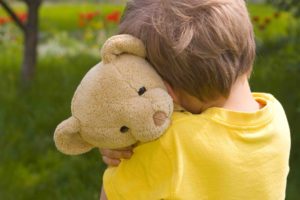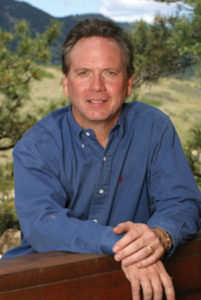A FOUR-PART MODEL FOR ACHIEVING YOUR RECONCILED SELF
No matter what the hurt within us, we can seek to be reconciled…. We can find the courage to hold reconciliation and goodwill in our own heart. We can do our part toward the healing of the world.
—Jack Kornfield
The great work of self-awareness is to bring us up to the next threshold.
—Mark Nepo
When people reconcile, they come together in mutual trust following a division caused by at least one person’s unfairness…. When reconciling, both parties willingly must begin listening to one another toward the initial goal of genuinely understanding each other….
—Robert Enright
To choose the path that leads to reconciliation requires that you first descend, not transcend.
—Alan Wolfelt
PART 1: INTRODUCING THE RECONCILED SELF
Introduction
If you’ve been waiting to hear Karl’s actual voice, wait no longer. This chapter introduces four chapters packed full of our conversations. In this chapter, I describe the qualities of our healing model to achieve a Reconciled Self. I also outline the specific steps we can take to stay connected to a loved one who has died.
Having reassured myself that staying close to Karl is right for me, I ask what meaning I have gleaned from my journey so far. I’ve been speaking and listening to Karl for nearly twenty months. During that time, I have survived the crash that killed him, repaired and sold the rural property, moved to another house in another state and city, been flooded out and made homeless, lost about half of my possessions and gave away what remained, and repatriated to Canada.
It is a lot of trauma, loss, grief, hard work, and change.

As I continue to reflect, a model for healing grief begins to emerge, which we (Karl and I) call The Reconciled Self. I’m confident that our model can be generalizable to different contexts, and it fits with the natural preferences and experiences of a mourning person. It aligns well with the material discussed in Chapter 5 (about how continuing bonds with a loved one can be comforting, reassuring and supportive). It aligns with current thinking about bereavement.

A fundamental tenet is that we aim first to do no harm. We focus our attention on the care and protection of the grieving person as we encourage them to journey into more profound healing.
This model is about restoring harmony where suffering has set some parts of us apart from other parts. It suits the high-attachment nature of the loss of an intimate relationship (but you could modify it for different circumstances). The approach offered in this chapter (and the four chapters that follow) would work particularly well in situations of sudden or violent death and tragic loss.
What is a RECONCILED SELF?
With reconciliation comes a renewed sense of energy and confidence, an ability to fully acknowledge the reality of the death and a capacity to become re-involved in the activities of living. There is also an acknowledgement that pain and grief are difficult, yet necessary, parts of life.
—Alan Wolfelt

Let’s imagine the person who wants to be reconciled in her grief is a woman. This woman has lost the love of her life and had no time to prepare for the shock of that loss. She has been derailed by the suddenness of it, a sense of helplessness and a lack of closure. This sudden, violent death as complicated her mourning and PTS symptoms have persisted longer than they probably should have.
By her own account, she is doing the best she can. She knows that her loved one has died; she accepts that harsh reality and the appropriate help of others (including professionals). She is grateful for what she had with her loved one and for what she has now. She knows how to count her blessings. And our woman knows what not to be grateful for. She believes that she has forgiven what needs to be forgiven with her loved one. She seeks to forgive herself and others with patience.
While attending to the essentials of her self-care, this brave woman is also looking beyond the confines of her grieving self. She is scanning the horizon, however hesitantly, for opportunities to serve her community while honoring her loved one. She courageously and steadfastly maintains contact with her departed loved one while integrating the new reality of moving forward in her life. She feels she has had no psychological preparation to face her circumstances, but actually, she has had some.
This chapter (and all those that follow) provide some preliminary guidance on how this courageous soul might proceed on her healing journey.
Karl and I came to the notion of the Reconciled Self after I had done much reading and discussed it with him. Then I was delighted to find an echo of our ideas in the work of a specialist in grief, loss and mourning, Alan Wolfelt, author of When Your Soulmate Dies (2016) (see centerforloss.com), as well as in material and perspectives in the classic book on forgiveness by Robert Enright, Forgiveness is a Choice (2001).

What is fascinating is that I read those books after I’d developed our healing model, which emerged almost exclusively from my conversations with Karl. I typed the hundreds of thousands of the words we’d shared and then made sense of what we’d said to each other.
Karl’s own words
In contrast to the voice in earlier parts of this book, Karl’s own words guide the material you will read in the next four chapters, much as they direct my healing journey. As my guide, Karl offers succinct and straightforward advice, amounting pretty much to the following: God wants what we want; no second-guessing; expect “marigolds” (miracles); and reframe our reality as often and as thoroughly as we can to stay positive and optimistic about the future.
In each chapter, I hit the high notes of Karl’s wisdom and insights related to the specific healing lessons associated with each Gateway.

